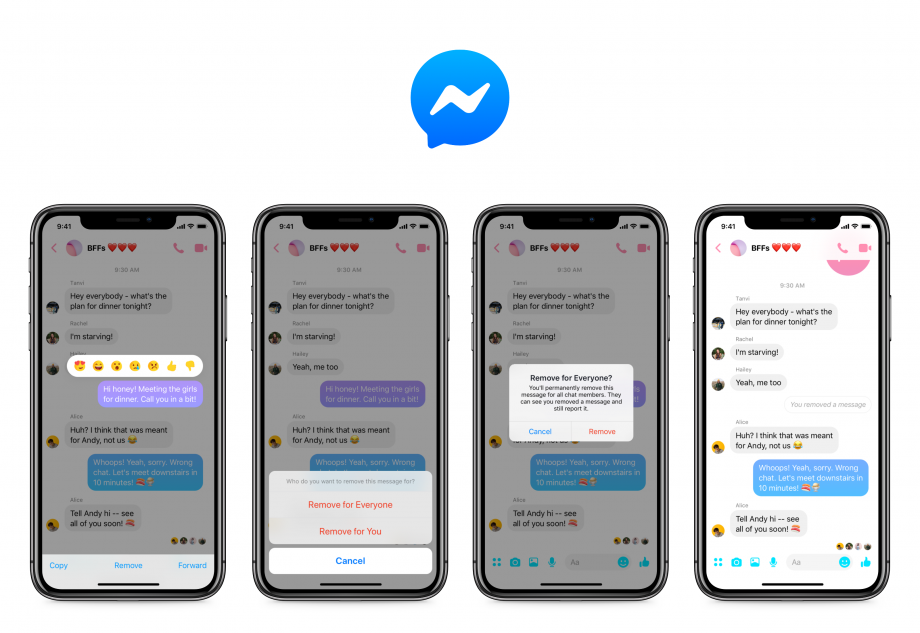Facebook Messenger Unsend has just gone live − here’s how to use it

Almost a year after the feature was first teased, and several months after it started appearing for users, Facebook Unsend has officially been launched, giving users the ability to “unsend” messages sent through Facebook Messenger. Here’s how to use it.
It’s only possible to unsend your own messages, and only if they were sent less than 10 minutes ago. That means you can’t just trawl through all of your old conversations and wipe out the things you wish you hadn’t said.
Read more: How to delete Facebook
The feature is officially called ‘Remove for Everyone’, and you can use it by tapping and holding a message you want to delete, then tapping ‘Remove’ from the pop-up menu.
If you then select the ‘Remove for Everyone’ option, a warning will appear, reading: “You’ll permanently remove this message for all chat members. They can see that you removed a message and still report it.”
If you press ahead, the message will completely disappear from the conversation, on both your side and the recipient’s side, and the line, “You [or the sender’s name] removed a message”, will appear in place of the deleted message.
“As of today, Facebook users across the world have more control over their conversations and are able to delete messages within a limited amount of time,” Facebook announced.
“Think of all the awkward tumbleweed situations you can now avoid! Sent your best mate a premature birthday wish? Not a problem. Accidentally pinged that embarrassing video to the family group, not your uni pals? Don’t fear. Regret pouring your heart to ‘the one that got away’? No issue.”
The Facebook Unsend feature is currently only available on the Messenger app for iOS and Android.
But why the 10-minute limit?
“Messenger’s time limit to remove a message is designed to provide users with more control and flexibility over their messages while also ensuring we prevent abuse of the feature (such as sending and removing harmful messages).
“Messenger users typically delete messages for themselves within a minute of sending it, so Messenger’s time limit of ten minutes should give people ample time to remove their message,” said the social media firm.
Back in November, Facebook Unsend started rolling out to users in Poland, Bolivia, Colombia and Lithuania.
Facebook told TechCrunch at the time that it will keep a private copy of the message “for a short while” after it has been deleted, in order to review it in case a user reports the sender for harassment.
While there’s no reference to this in the company’s official announcement, Facebook does say: “If a user does receive a harmful message and the sender removes that message, the recipient can, for a limited time, still report the conversation to Facebook for investigation the same way they would with any Messenger conversation.”
Read more: Best VPN
The feature works on all types of messages, including text, group chats, photos, videos and links, and Facebook is believed to be working on more unsend features, including the ability to preemptively set an expiration date for specific messages or entire threads.
Are you happy with the Facebook Unsend 10-minute limit? Let us know on Twitter @TrustedReviews.


